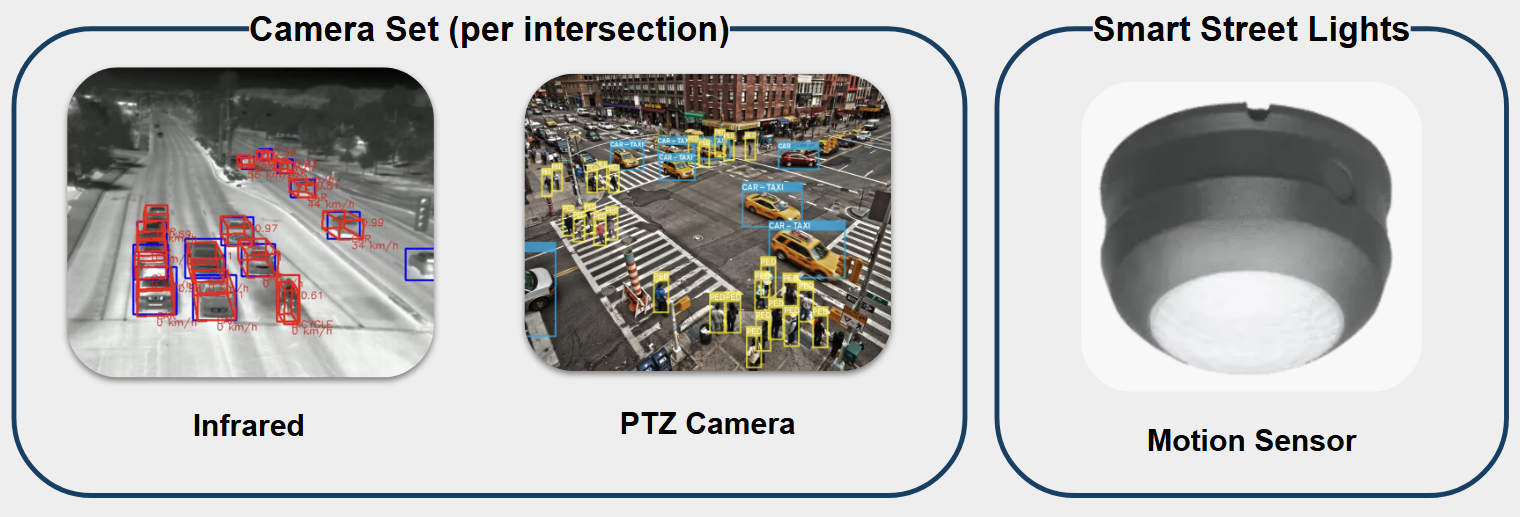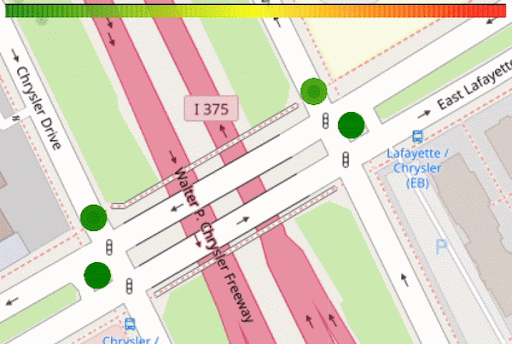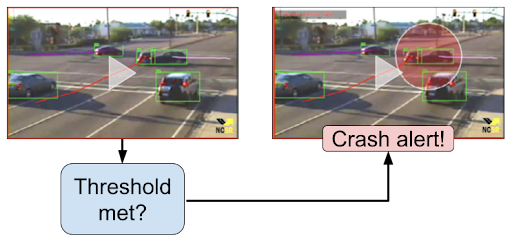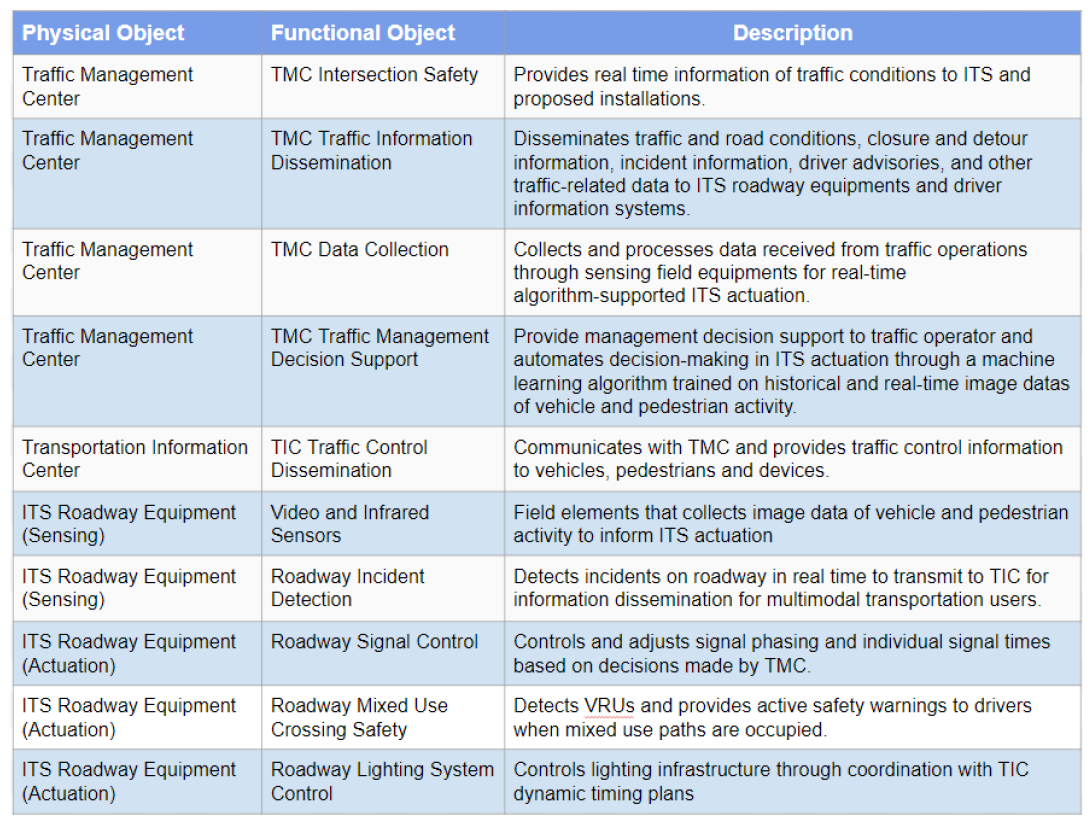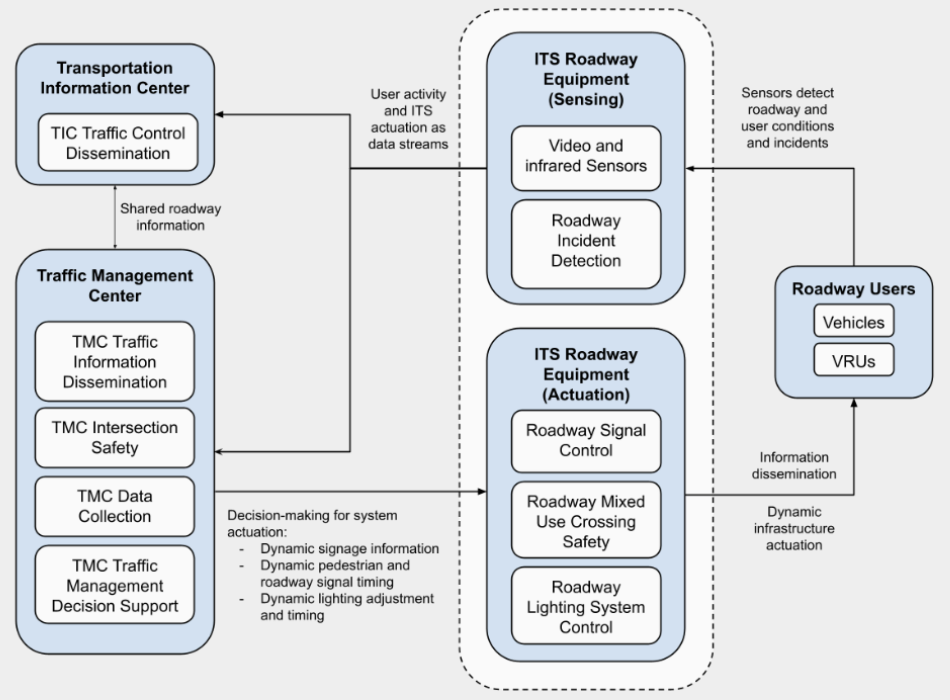Based on the research we already have, everything including the problem statement, solution statement, and anticipated short term and long term impacts with a cost and benefit estimation and analysis is built up into a 10-page document.
Click to view our ConOps
Other than leveraging advanced technology in a system, the end goal of our project is to improve the travel experience for pedestrians, cyclists, and other vulnerable road users and eventually improve the willingness to "cross the road" and reconnect once-split neighborhoods and build stronger community connections.
Click to view our team interview video
The anticipated benefits of our project are:
- Safety:
- Enhanced road user perceptions
- Incident management system improves EMS response
- Operational:
- Automation reduces human oversight
- Self-sustaining through continuous data collection
- Generalizable to connected vehicles
- Community:
- Improved walkability reconnects neighborhoods
- Promotes sustainable transportation
The anticipated challenges of our project are:
- Accuracy:
- No AI detection method can achieve 100% accuracy
- System must be robust against model error
To buffer these challenges...
- Redundant system architecture
- Continued advancements in AI
- Trust:
- Camera usage brings privacy concerns
- Communities may not immediately embrace new technology
To buffer these challenges...
- Need for community outreach to build public acceptance
- Cost:
- Balancing equipment quality vs cost
To buffer these challenges...
- Low investment for proof-of-concept on a single intersection

Variable Message Sign placement and design (physical infrastructure)

Part of the cost and benefit analysis
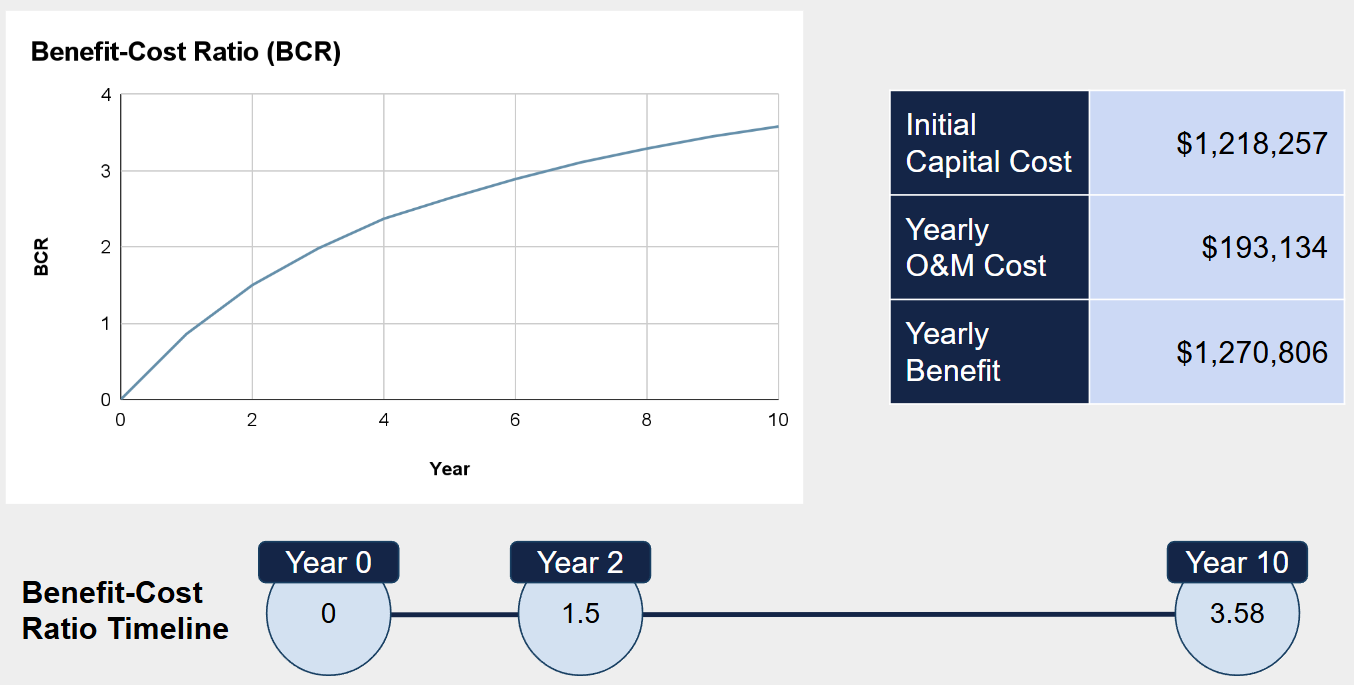
Our Benefit and Cost Ratio



